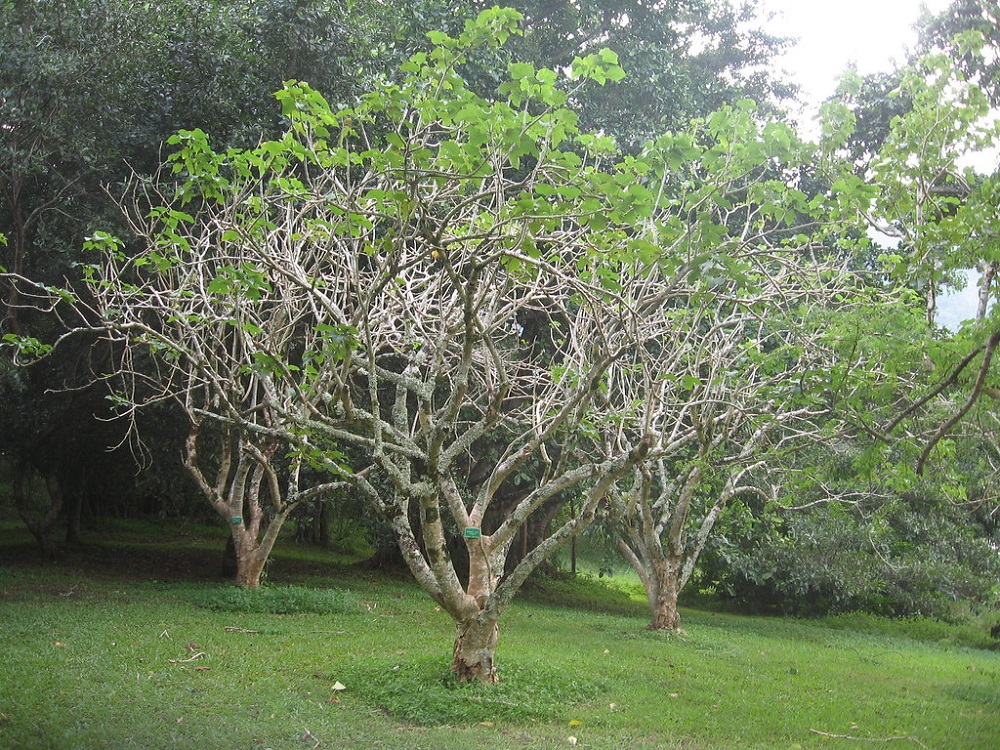Ratanjot - Barbados Tree

Jatropha curcas
Summary
Scientific Classification
Kingdom: Plantae
Division: Magnoliophyta
Class: Dicotyledonae
Order: Malpighiales
Family: Euphorbiaceae
Genus: Jatropha
Species: J.curcas
Scientific Name: Jatropha curcasL.
Common names
English : Barbados nut tree.
Hindi: Jamal ghota, Ratanjot.
Kannada: Kananeranda, Doddaharalu.
Marathi: Mogli Erand.
Discription
- Habit and Habitat: Jatrophacurcas is a perennial, monoecious shrub or small tree up to 6 m high; bark pale brown, papery, peeling; slash exudes a copious watery latex.J. curcas grows as a weed in tropical and sub-tropical environments and can be found in disturbed sites, pastures, open woodlands, waste areas, abandoned gardens, and along roadsides.
- Distribution: Though native to America, the species is almost pantropical now, widely planted as a medicinal plant which soon tends to establish itself.
- Morphology:
Leaf: Leaves alternately appear with a petiole (3–20 cm long) and a blade broadly ovate in outline, usually shallowly 5-lobed.
Inflorescence: The inflorescences are terminal or axillary umbel-like cymes, often paired, with a solitary female flower terminating each major axis and many male flowers on lateral branches.
Flower: Flowers are unisexual.
Androecium: Male flowers: sepals 5, approximately 4 mm, connate at base; petals oblong, green-yellow, approximately 6 mm, connate to middle, hairy inside; disk glands 5, nearly terete; stamens 10; outer 5 filaments free, inner filaments connate in lower part.
Gynoecium: Female flowers: pedicels elongate; sepals free, approximately 6 mm; petals and disk glands as in male; ovary 3-locular, glabrous; styles bifid at apex.
Fruit: Fruits are broadly ellipsoid capsules 2.5–3 cm × ca. 2 cm, smooth-skinned, initially fleshy and green, turning yellow and eventually dry and black and are 3-seeded.
Seeds: Seeds are ellipsoid, 1–2 cm long, mottled black and coarsely pitted.
Flowering and Fruiting time: Flowering from April-July.Fruiting April onwards. - Propagation: Grows readily, from cuttings or seeds.
- Importance:
Environmental
a.Boundary, barrier or support
b.Erosion control or dune stabilization
c.Host of pest
e.Soil conservation
f.Soil improvement
Fuels
a.Biofuels
Materials
a.Dye/tanning
b.Dyestuffs
c.Lipids
d.Poisonous to mammals
f.Wax - Location: Botanical Garden.
 Trees of GSS Project supported by Makerspace Belgaum Website concept and designe by
Trees of GSS Project supported by Makerspace Belgaum Website concept and designe by